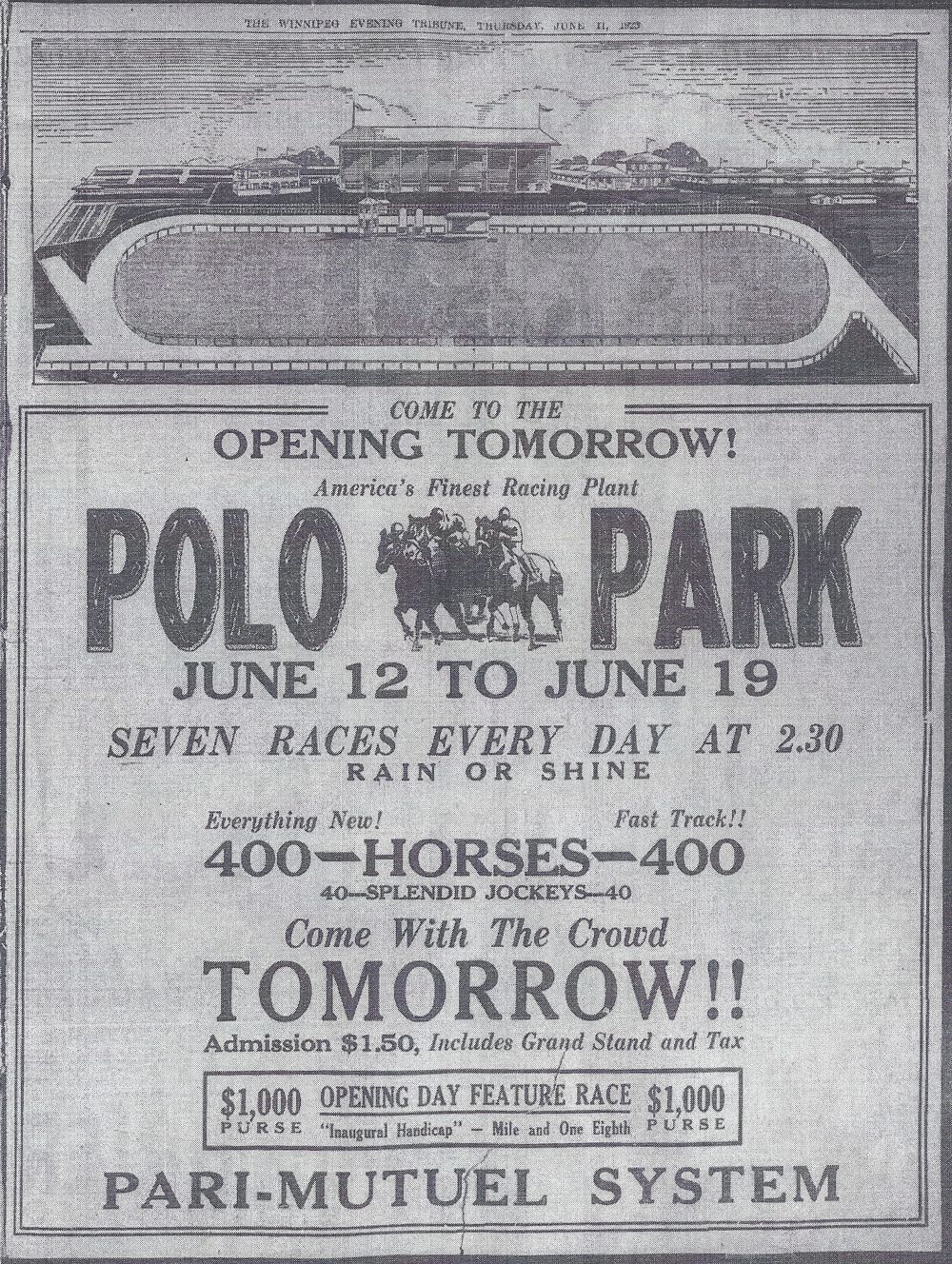Polo Park opening day full page ad (Winnipeg Tribune, June 11, 1925)
By Track Historian Bob Gates
This coming June 12 marks the 100th anniversary of the opening of Polo Park Racetrack. It was the beginning of a run that lasted 31 years and 22 days. Billed as “America’s Finest Racing Plant,” Polo Park would go dark forever on July 4, 1956.
In total, Polo Park hosted 642 days of racing, and its grand opening created quite a stir. A.G. Creelman was the successful bidder for the construction of the track—the same man who had built Whittier Park Racetrack the year prior—so all knew Polo Park was in good hands.
Winnipeg’s new racetrack earned more than its fair share of coverage—not just in the sports pages, but also in the society pages of local newspapers. Going to the races was an “event.” Here’s an excerpt from the June 13, 1925 Winnipeg Tribune that highlights the fashionable crowd in attendance on opening day:
“Friday marked the official opening
of Polo Park, when throngs of en-
thusiastic spectators filled the grand-
stand and transformed the prome-
nade into a veritable fashions row,
Chic chapeaux in colorful variety,
smart turtle-necked sweaters and
kick-pleated skirts, kaleidoscopic
printed frocks half hidden by flannel
and silk coats, many of which made
their initial appearance, formed a
moving mass of brilliant colour which
cheered the winners, backed favourites
and forgot the muddiness of the
ground and its relation to new shoes
in the whole-hearted excitement
of the races.”
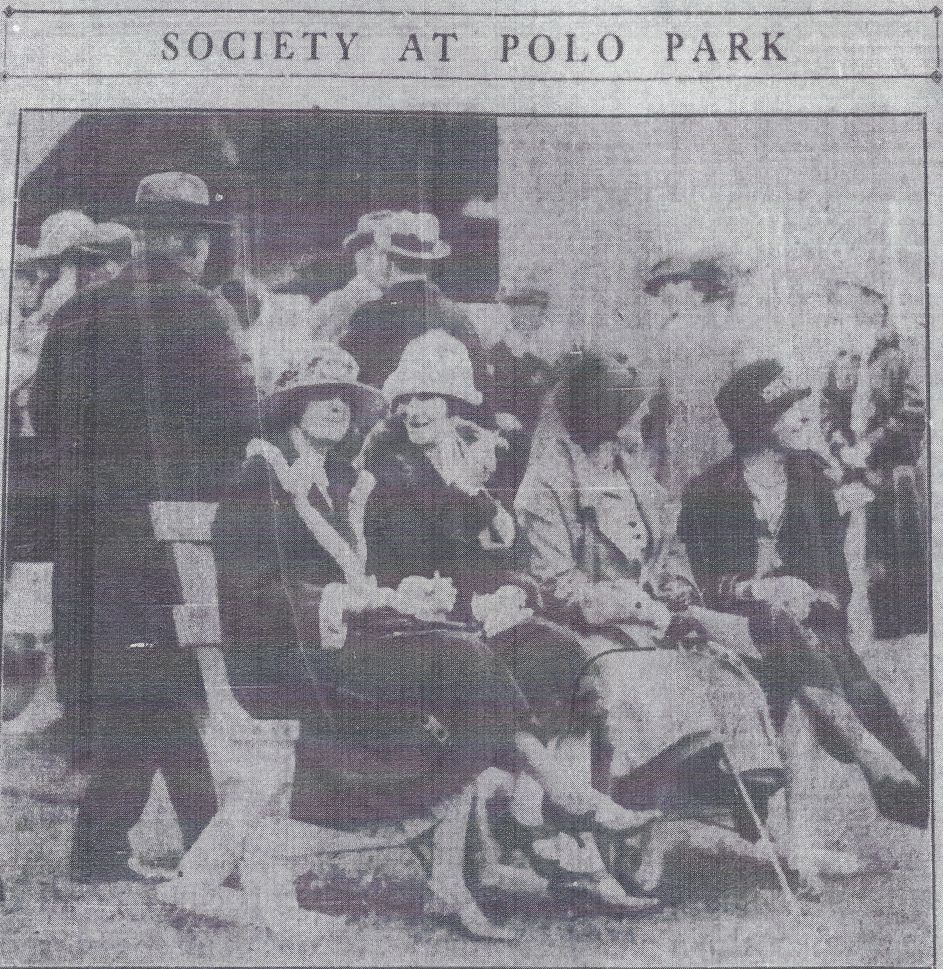
Society meets at Polo Park (Winnipeg Tribune, June 15, 1925)
When was the last time you read anything like that—especially about a horse racing crowd? The 1920s were a different time: prohibition was in full swing, the “Roaring Twenties” were in full force, and the Great Depression loomed on the horizon.
While Robert James Speers is often credited with building Polo Park, he was not the original driving force behind its creation. Rather, he came to the rescue of a group that had planned the West End track, and ensured Polo Park was completed in time for the 1925 racing season.
Polo Park was opened under the auspices of the Winnipeg Jockey Club and the St. Vital Agricultural Society. The opening ceremonies were conducted by the Mayor of Winnipeg, Lieutenant Colonel Ralph Webb, who described the new facility as “a credit to Winnipeg.” Other dignitaries on hand included Jockey Club President John W. (Jack) Sifton and most of the track’s racing officials.
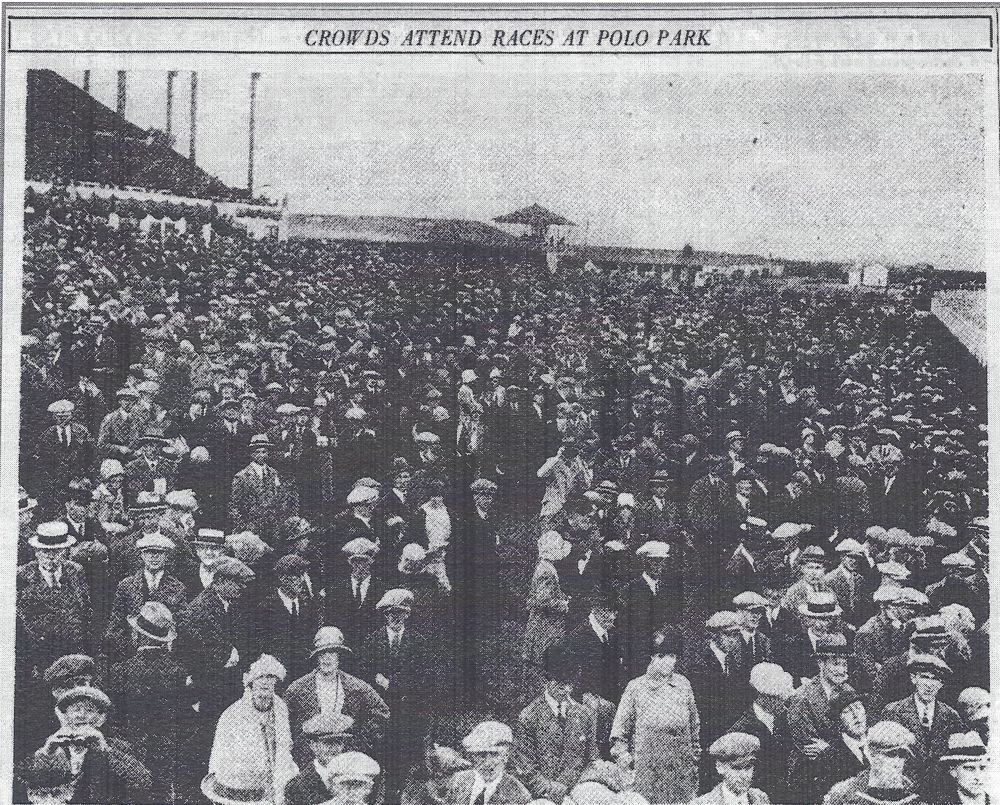
Opening day crowd at Polo Park (Free Press Evening Bulletin, June 15, 1925)
The grandstand was a majestic sight, with seating for 4,500 patrons, while the lawn in front could accommodate another 15,000. The track was known for its gleaming white buildings with maroon roofs and large “Polo Park” lettering painted atop the grandstand.
The inaugural race card took place on Friday, June 12, 1925. The first race was a five-furlong sprint for a $500 purse, won by W.P. Montgomery, ridden by jockey Geargin.
Polo Park was no stranger to tragedy. In its 31-year history, two jockeys lost their lives due to racing accidents: Earl “Sandy” Graham on September 10, 1927, and Rex Young on June 27, 1941.
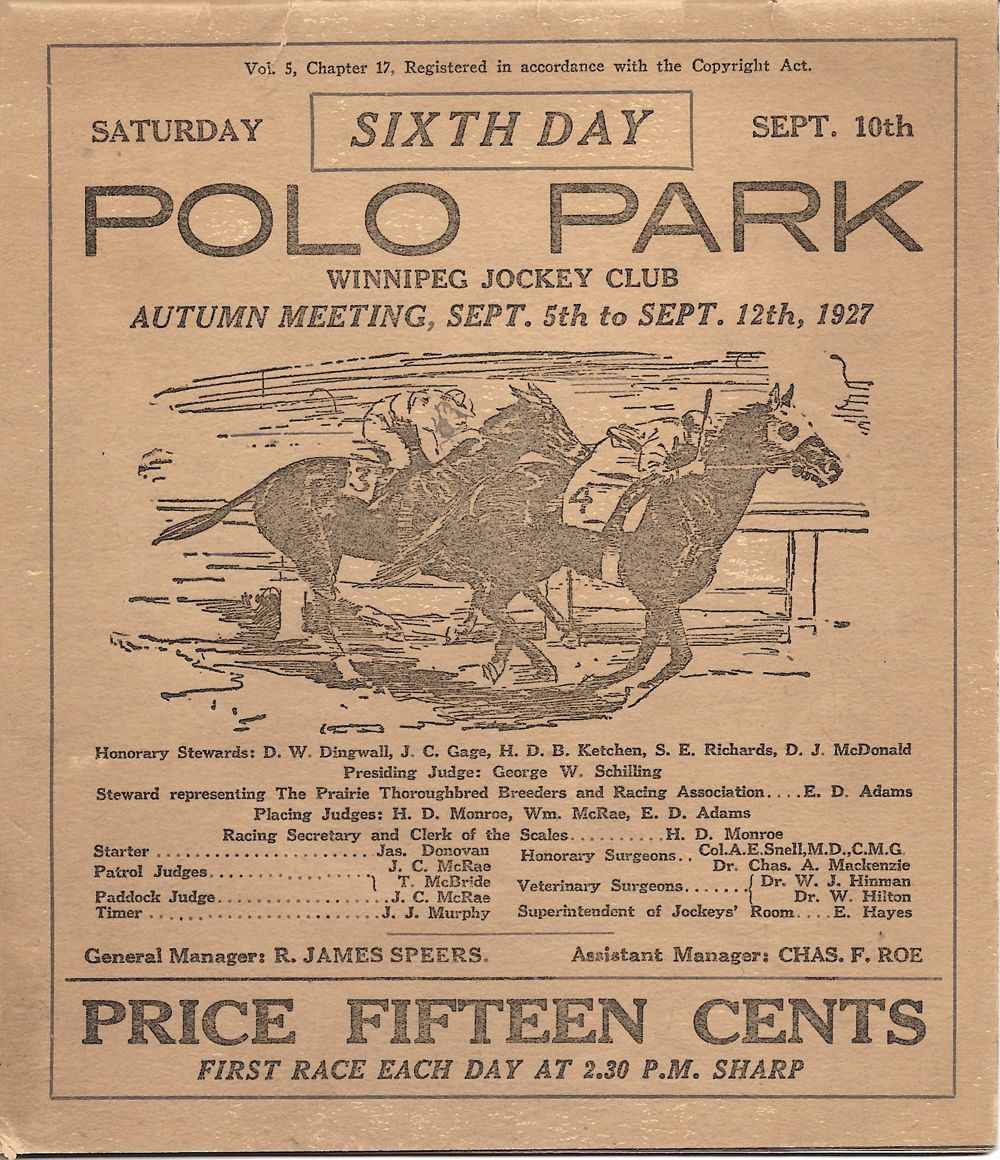
Official program from Setpember 10, 1927, the day Sandy Graham was fatally injured (Bob Gates photo)
The track also suffered two major fires. The first, in November 1934, destroyed the grandstand but thankfully caused no loss of human or equine life. The second, in August 1946, destroyed “B” Barn and resulted in the death of two racehorses.
In 1943, Polo Park adopted twilight racing—a popular format first introduced at Whittier Park. Weekday post times were set at 5:00 p.m., with racing concluding by 7:30 p.m. That same year, Polo Park became the only active racetrack in the Winnipeg area. With Whittier Park closed, the Manitoba Jockey Club held its meet at Polo Park from May 28 to June 12, followed by the Winnipeg Jockey Club’s meet from June 19 to July 5. Saturday races started at 2:30 p.m.
Did you know Polo Park once featured majestic swans? In the summer of 1950, swans were brought in on loan from a park in Portage la Prairie. Polo Park’s manager, James Speers, later purchased swans for the infield lake. When the track closed in 1956, a pair were gifted to E.P. Taylor for the newly built Woodbine Racetrack.
The future of racing in Winnipeg was dealt a severe blow with the death of Robert James Speers in 1955. A year later, Polo Park’s time came to an end. The land had become too valuable to be used solely for horse racing. Also lost was Winnipeg’s claim to the Canadian Derby, which moved to Edmonton in 1957 and never returned to Manitoba.
The end came at 6:53 p.m. on Wednesday, July 4, 1956. After the final race, the band played Auld Lang Syne, and the 8,000-strong crowd left with a heavy heart, knowing the city had lost something special.
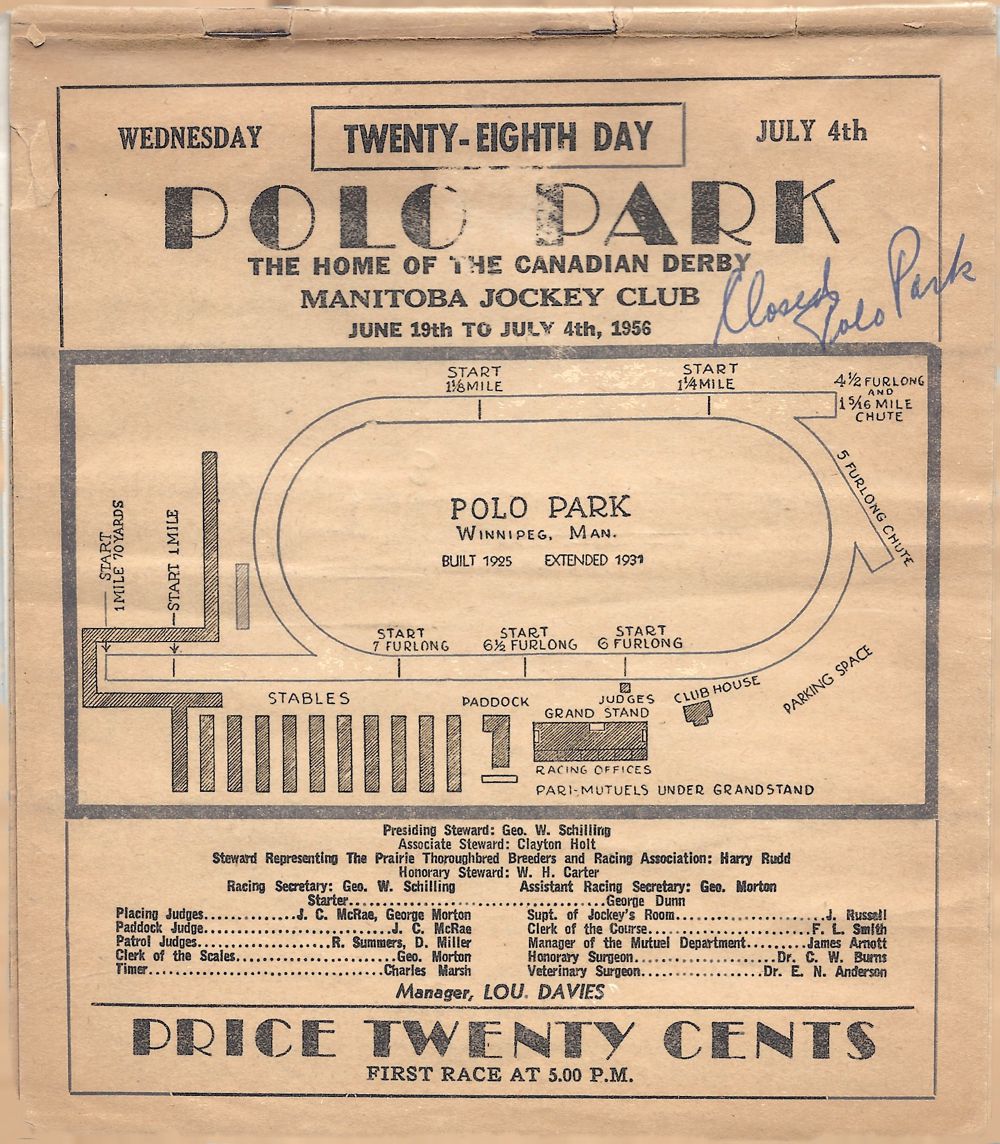
Official program from closing day at Polo Park, July 4, 1956 (Bob Gates photo)
Miss Anna M. Speers, daughter of R.J. Speers and president of the Manitoba Jockey Club, announced that land had been purchased and plans drawn for a new racetrack. However, she admitted that “at the present time, we can give you no assurance as to when we will resume racing in Winnipeg.”
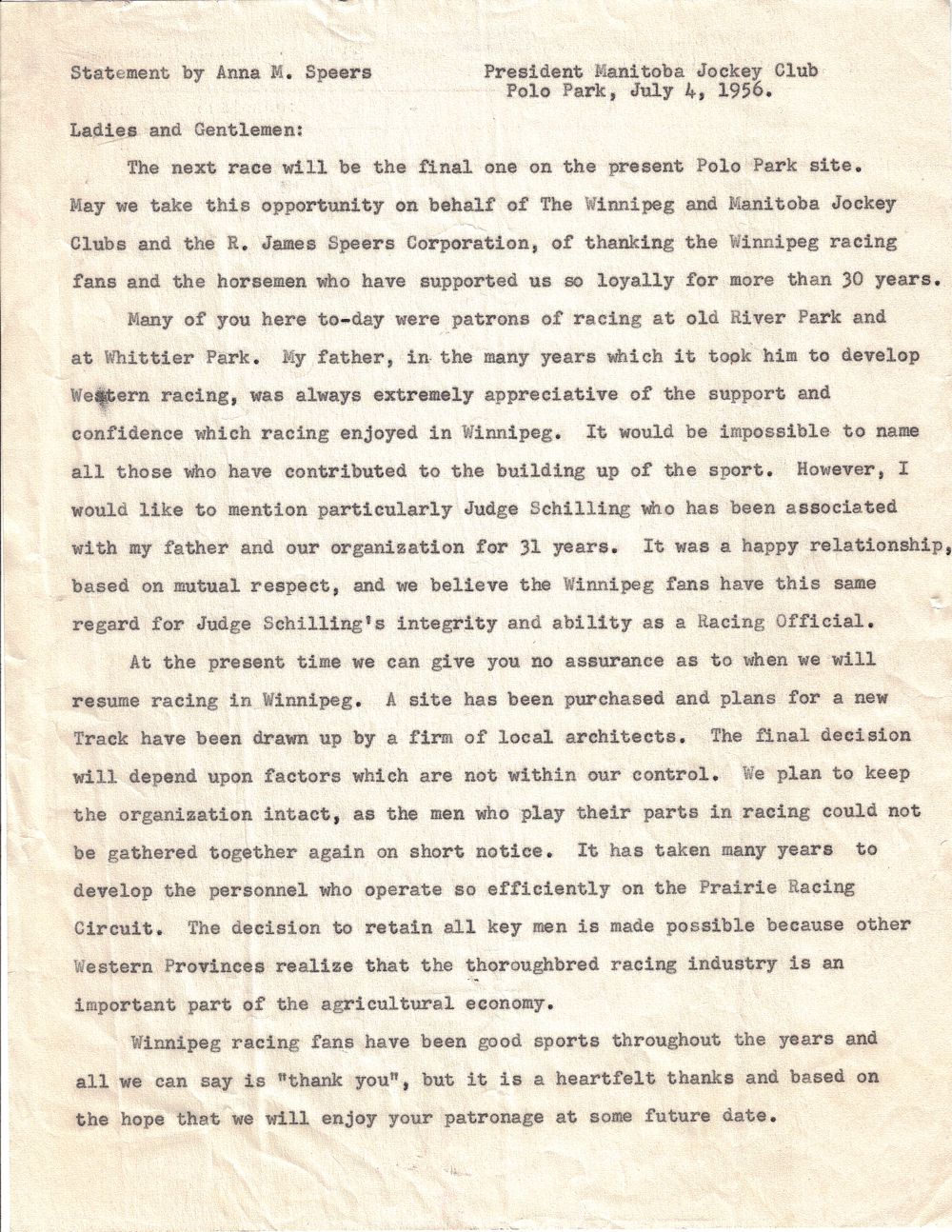
In October 1956, the grandstand was torn down and the lumber sold as salvage. The clubhouse was offered for $3,000. The final demolition came in 1957, when Polo Park’s signature white gates were removed.
The last remaining link between Polo Park and horse racing ended on March 31, 1975. While Assiniboia Downs had replaced Polo Park as Winnipeg’s racetrack in 1958, its administrative offices remained in the Polo Park Shopping Centre until 1975, when they were moved to the Downs property—ending a 50-year connection to Polo Park.
For some, the name “Polo Park” still conjures memories of the racetrack. For others, it’s simply a shopping centre. But if you’re lucky, you might find someone who remembers the old Polo Park and has their own stories to tell—about Winnipeg’s “first” West End racetrack.

